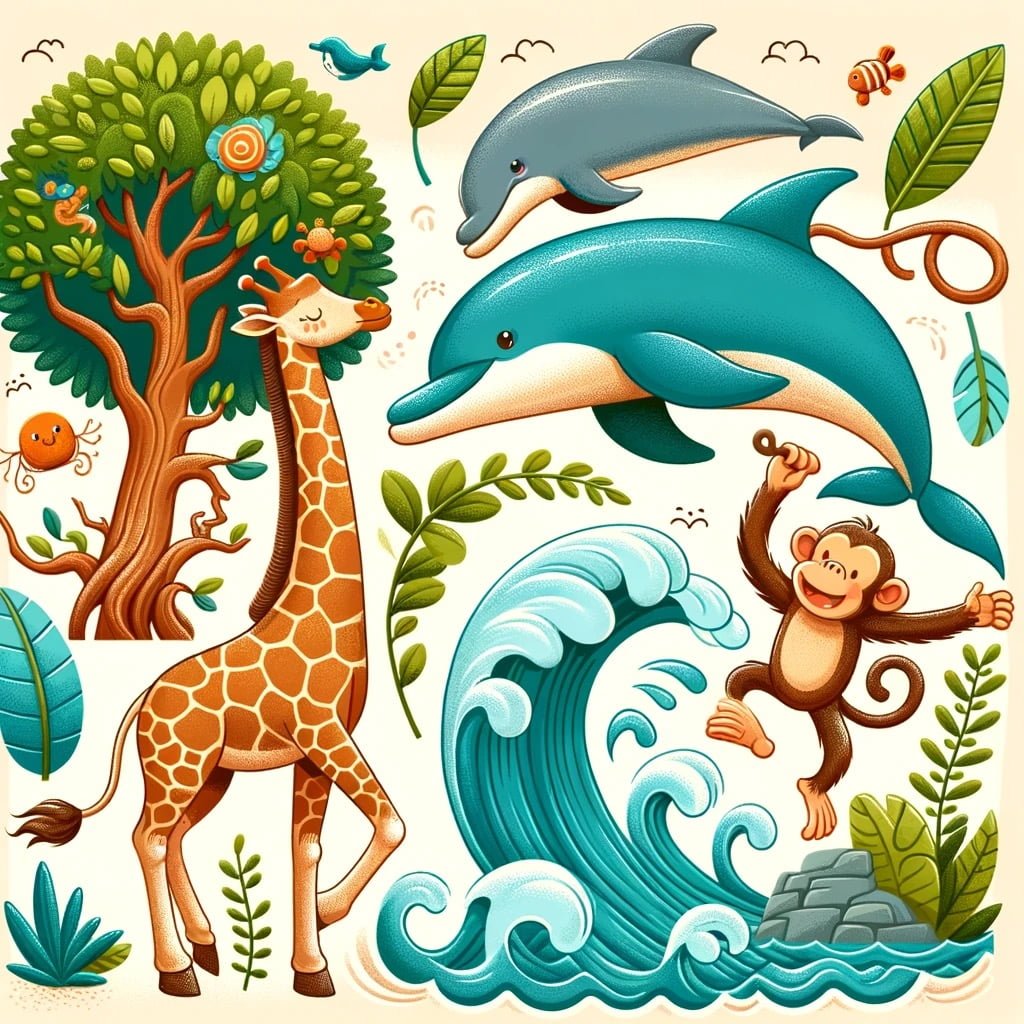Welcome to our blog post on “Sea Turtle Facts For Kids,” where we dive into the fascinating world of these ancient and majestic marine creatures. From their incredible history spanning millions of years to their remarkable abilities in navigation and diving, sea turtles never fail to amaze us with their unique characteristics. Whether you’re a young explorer curious about the colorful varieties of sea turtles or an older student interested in their important role in ocean ecosystems, this post will take you on an exciting journey through ten fun facts about these amazing animals. Join us as we uncover the wonders of sea turtles and discover why they are truly a marvel of the natural world.
Sea Turtle Facts For Kids
1. Sea Turtles Have Been Around for 150 Million Years

For younger kids: Sea turtles are super old – they lived even before dinosaurs!
For older kids: Sea turtles have been on Earth for about 150 million years, making them one of the oldest species on the planet.
Detailed explanation:Sea turtles are truly fascinating creatures that have been around for an astonishing 150 million years, making them some of the oldest species on our planet. These incredible animals have stood the test of time, adapting to changes in their environment and surviving through various challenges over the millennia.
Sea turtles are well-known for their long lifespan, with some species living up to 80 years or more. Their ability to thrive for so long is a testament to their incredible evolutionary adaptations and resilience as a species. They have existed through multiple extinction events and have managed to survive and continue to thrive in oceans all around the world.
For kids who are learning about sea turtles, it’s important for them to understand the longevity and endurance of these remarkable creatures. By knowing that sea turtles have been around for millions of years, children can develop a greater appreciation for the importance of conservation efforts to protect these ancient animals for future generations.
In addition to their impressive history, sea turtles also play a vital role in maintaining the health of marine ecosystems. They help to control populations of jellyfish, seagrass, and algae, ensuring that the delicate balance of the ocean is preserved. By educating kids about sea turtles and their role in the environment, we can instill a sense of responsibility and stewardship for the natural world in the next generation.
In conclusion, the fact that sea turtles have been around for 150 million years is not only a testament to their resilience and adaptability but also serves as a reminder of the importance of protecting these incredible creatures for years to come. By teaching children about sea turtle facts for kids, we can inspire a new generation of conservationists who will work to ensure the survival of these ancient and magnificent animals.
Sea Turtle Facts For Kids
2. Sea Turtles Can Dive Over 1,000 Feet

For younger kids: Sea turtles can dive really deep underwater to find their food.
For older kids: Some sea turtles like the leatherback can dive over 1,000 feet deep in search of their favorite prey like jellyfish.
Detailed explanation:Sea turtles are truly incredible creatures that possess amazing abilities, one of which is their impressive diving capabilities. One of the most fascinating Sea Turtle Facts For Kids is that these marine reptiles can dive over 1,000 feet deep into the ocean. This remarkable feat is made possible by the unique adaptations that sea turtles have developed over millions of years of evolution.
Sea turtles have an anatomy that is perfectly suited for deep-sea diving. Their lungs can collapse under pressure, allowing them to withstand the high pressures experienced at great depths. Additionally, sea turtles have large stores of oxygen in their blood and muscles, which allows them to stay underwater for extended periods of time.
When a sea turtle dives, it uses its powerful flippers to propel itself downwards. As it descends into the depths, the sea turtle’s heart rate slows down to conserve oxygen, allowing it to stay submerged for longer periods. Sea turtles also have the ability to slow down their metabolism when diving, further conserving oxygen and energy.
The ability of sea turtles to dive over 1,000 feet deep allows them to access food sources that are not available to other marine animals. They feed on a variety of marine life, including sponges, jellyfish, and sea grasses, which are abundant at deeper depths. By diving to such depths, sea turtles play a crucial role in maintaining the health of marine ecosystems.
In conclusion, the fact that sea turtles can dive over 1,000 feet deep is a testament to their incredible adaptations and abilities. It is truly amazing to think about the depths these majestic creatures are capable of reaching in the vast ocean. Sea Turtle Facts For Kids provide a great opportunity to learn about the fascinating world of sea turtles and the important role they play in marine ecosystems.
Sea Turtle Facts For Kids
3. Female Sea Turtles Return to the Same Beach to Lay Eggs

For younger kids: Mommy sea turtles always choose the same beach to have their babies.
For older kids: Female sea turtles have an amazing homing ability, returning to the exact beach where they were born to lay their eggs years later.
Detailed explanation:Sea turtles are known for their incredible migratory journeys across the oceans, but one of the most fascinating aspects of their life cycle is their behavior when it comes to nesting. Female sea turtles have an extraordinary ability to navigate vast distances back to the exact same beach where they were born, in order to lay their eggs. This phenomenon is known as natal homing, and it is a crucial part of the survival of sea turtle populations.
When female sea turtles hatch from their eggs and make their way to the ocean, they spend years traveling the world’s oceans before reaching sexual maturity. Once they are ready to mate and reproduce, they return to the same beach where they first emerged as hatchlings. This incredible homing instinct ensures that they are able to find a suitable nesting site, as they are familiar with the beach and its characteristics.
The ability of female sea turtles to return to the same beach to lay their eggs is essential for the survival of the species. By returning to the same location time and time again, they are able to ensure that their offspring have the best chance of survival. This behavior also helps to maintain genetic diversity within sea turtle populations, as individuals from different regions are able to intermingle when they all return to the same nesting site.
In conclusion, the fact that female sea turtles return to the same beach to lay their eggs is a remarkable example of their incredible instincts and their role in ensuring the continuation of their species. It is a behavior that highlights the amazing adaptability and resilience of these fascinating creatures. Sea Turtle Facts For Kids offer a glimpse into the marvels of the natural world and the importance of protecting these majestic animals and their habitats.
Sea Turtle Facts For Kids
4. Sea Turtles Can Travel Thousands of Miles
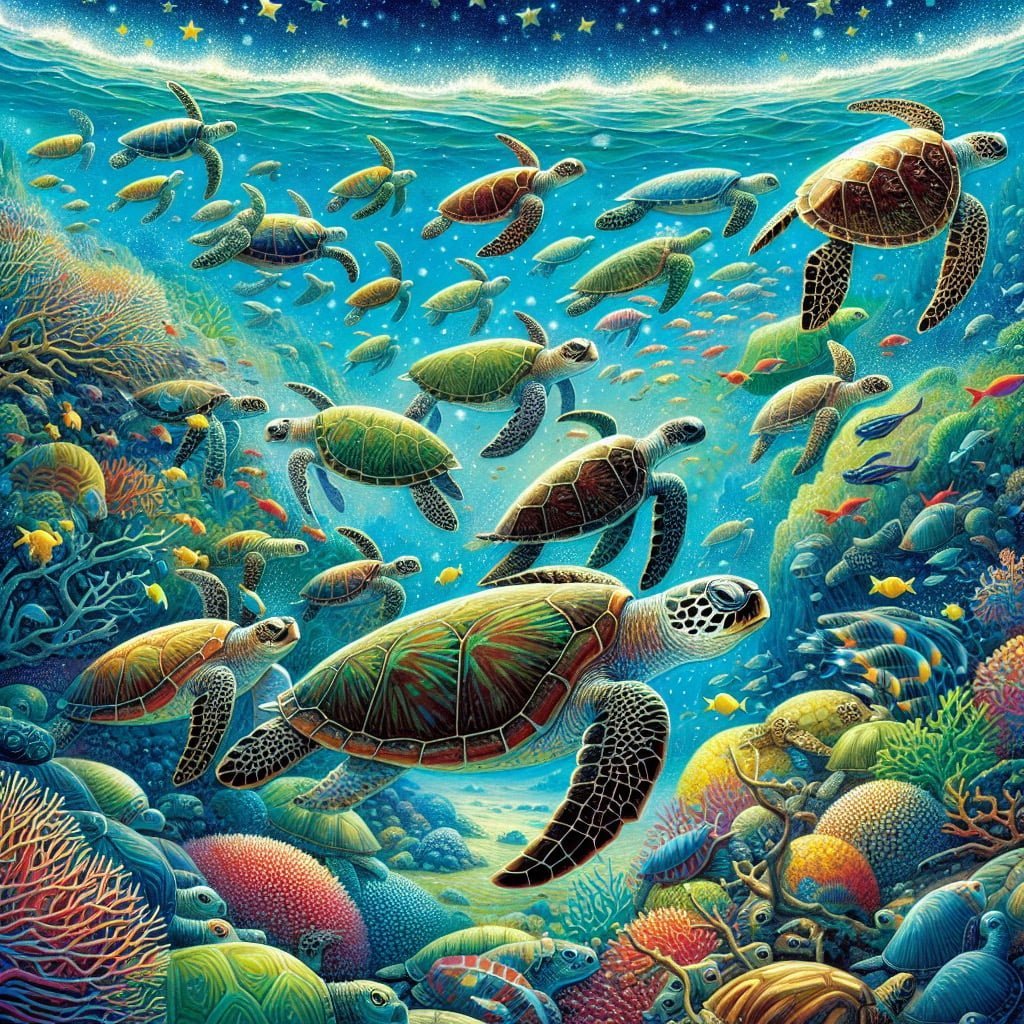
For younger kids: Sea turtles are like world travelers, going on long trips across the ocean.
For older kids: Some sea turtles migrate thousands of miles between their feeding grounds and nesting beaches, crossing entire oceans during their journey.
Detailed explanation:Sea turtles are truly remarkable creatures that embark on incredible journeys across the world’s oceans. One of the most fascinating sea turtle facts for kids is that these marine reptiles can travel thousands of miles during their migrations.
Sea turtles undertake these long journeys for various reasons, such as finding food, mating, or nesting. One of the most well-known long-distance migrations is that of the loggerhead sea turtle, which travels from its foraging grounds in places like Florida or Brazil to its nesting beaches in places like the Mediterranean or the coasts of Japan. This journey can span thousands of miles and take several months to complete.
During these epic journeys, sea turtles rely on their remarkable navigational abilities to find their way across vast expanses of ocean. They use a combination of cues such as the Earth’s magnetic field, the sun, the stars, and even the smell of the water to guide them on their migration routes. It’s truly incredible to think about these ancient creatures traveling such vast distances with such precision.
Overall, the ability of sea turtles to travel thousands of miles showcases their incredible adaptability and resilience in the face of the many challenges they face in the open ocean. It’s a testament to the amazing natural history of these fascinating animals and something that both kids and adults can marvel at.
Sea Turtle Facts For Kids
5. Sea Turtles Have Strong Navigation Skills

For younger kids: Sea turtles are like little GPS systems – they always know where to go!
For older kids: Sea turtles possess remarkable navigation abilities, using the Earth’s magnetic field, the sun, and the stars to find their way through vast oceans.
Detailed explanation:Sea turtles are truly fascinating creatures, particularly when it comes to their incredible navigation skills. These marine reptiles have the ability to travel vast distances across the ocean and return to the very same beach where they were hatched to lay their eggs. This impressive feat is made possible by a combination of innate abilities and environmental cues.
Sea turtles have a remarkable ability to sense the Earth’s magnetic field, which allows them to navigate with precision across long distances. By detecting subtle variations in the magnetic field, sea turtles can determine their position relative to their breeding grounds and feeding areas. This magnetic sensitivity is thought to be linked to specialized cells in the sea turtle’s brain that are sensitive to magnetic fields, providing them with a sort of internal compass.
In addition to their magnetic navigation abilities, sea turtles also rely on other cues such as the position of the sun and the stars, as well as the scent of the ocean, to find their way through the vast expanse of the ocean. Young sea turtles, in particular, are known to imprint on the unique magnetic signature of their natal beach during the critical period after hatching, allowing them to return to the same spot years later to lay their own eggs.
Overall, sea turtles’ strong navigation skills are a crucial part of their remarkable ability to traverse the oceans and complete their life cycle. From migrating long distances to returning to their birthplace to breed, these fascinating creatures continue to awe and inspire us with their incredible feats.
Sea Turtle Facts For Kids
6. Hawksbill Sea Turtles Help Coral Reefs Thrive
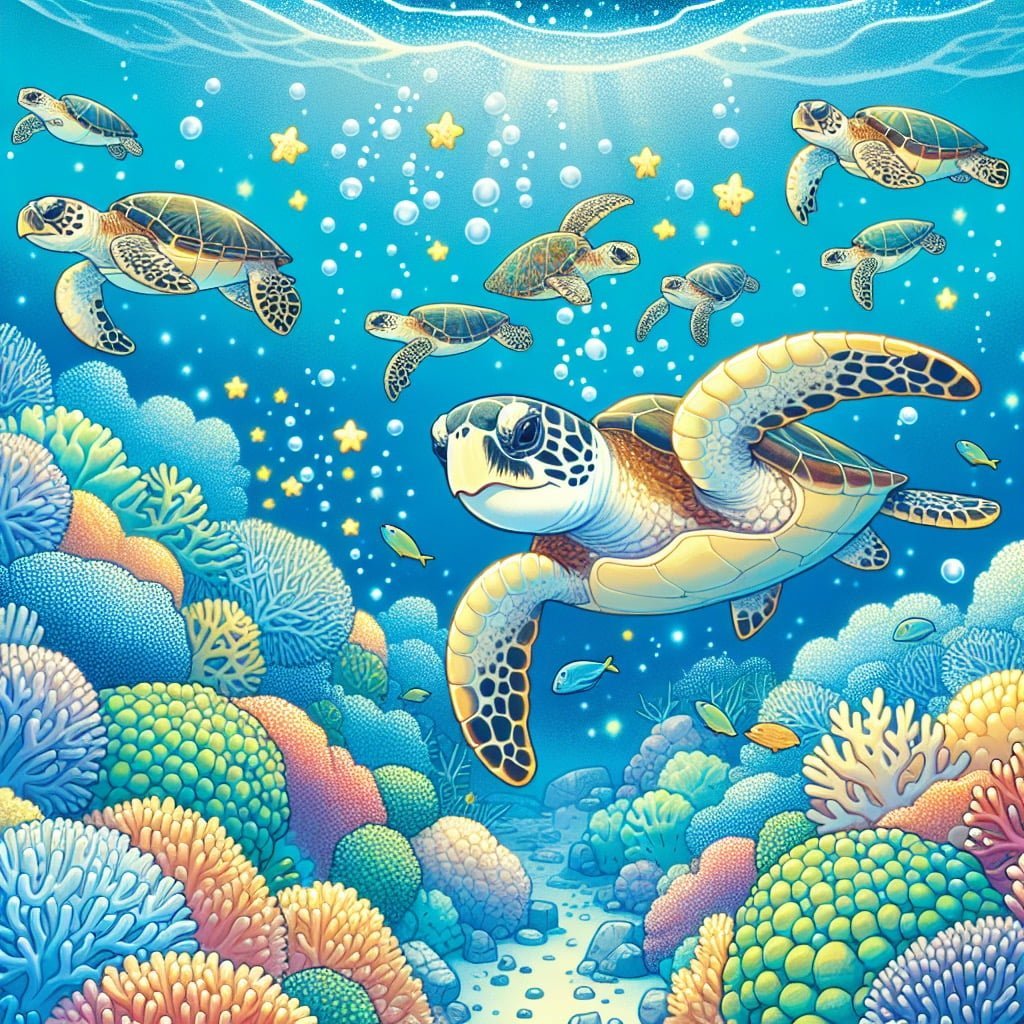
For younger kids: Hawksbill sea turtles are like gardeners of the ocean, helping make coral reefs beautiful!
For older kids: Hawksbill sea turtles play a crucial role in coral reef ecosystems by eating sponges, which allows coral to grow, increasing biodiversity.
Detailed explanation:Sea turtles are fascinating creatures that play a vital role in maintaining the health of marine ecosystems, particularly coral reefs. One species of sea turtle that is particularly important for coral reefs is the hawksbill sea turtle. These magnificent creatures are known for their beautiful overlapping scales on their shell, which resemble the pattern of a hawk’s beak.
Hawksbill sea turtles are omnivorous, meaning they eat a variety of plant and animal matter. One of their favorite foods happens to be sponges, which are often found covering coral reefs. By feasting on sponges, hawksbill sea turtles help to keep the sponge population in check. This is crucial because sponges can sometimes outcompete corals for space on the reef, which can have damaging effects on the overall health of the reef ecosystem.
In addition to controlling the sponge population, hawksbill sea turtles also play a key role in nutrient cycling on coral reefs. When they consume sponges, they help to release nutrients back into the water as waste. These nutrients can then be taken up by other organisms living in the reef, creating a more balanced and healthy ecosystem overall.
Overall, the presence of hawksbill sea turtles on coral reefs is essential for maintaining the delicate balance of these diverse and vibrant ecosystems. By understanding and appreciating sea turtle facts, especially for kids, we can ensure that these incredible creatures continue to thrive and support the health of our oceans for generations to come.
Sea Turtle Facts For Kids
7. Leatherback Sea Turtles are the Largest Species
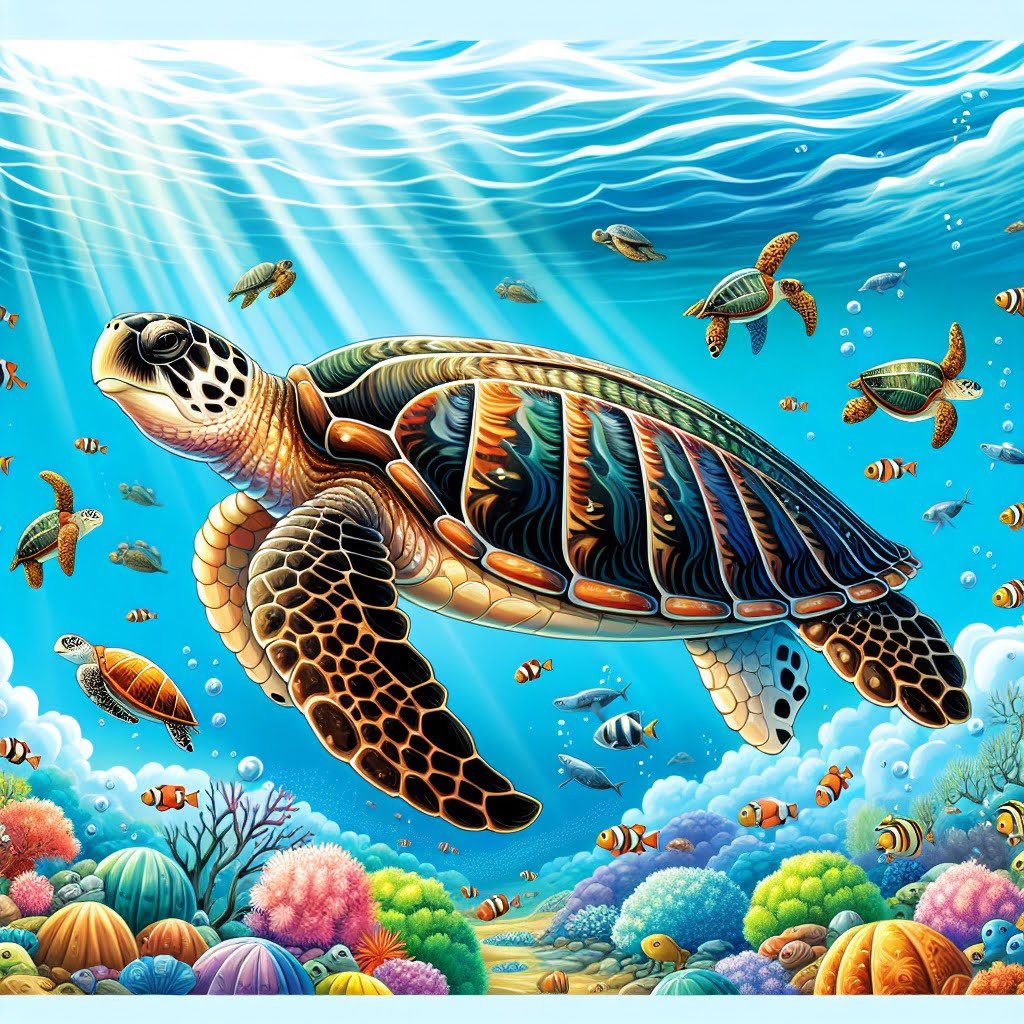
For younger kids: Leatherback sea turtles are the huge giants of the sea turtle world!
For older kids: Leatherback sea turtles are the largest sea turtle species; they can grow up to 7 feet long and weigh over 2,000 pounds.
Detailed explanation:Sea turtles are fascinating creatures that have captured the hearts of many people, especially children. One of the most impressive facts about sea turtles is that the Leatherback Sea Turtle is the largest species among them.
The Leatherback Sea Turtle, also known as Dermochelys coriacea, can grow up to seven feet in length and weigh up to 2,000 pounds. This remarkable size makes them the largest of all sea turtle species. Their immense size is not just for show; it actually serves a purpose in their survival in the ocean. The Leatherback Sea Turtle’s large size helps them to regulate their body temperature more effectively in cold waters, providing them with an advantage over other, smaller species of sea turtles.
In addition to their size, Leatherback Sea Turtles also have a unique feature that sets them apart from other sea turtles. Unlike other sea turtles that have a hard, bony shell, Leatherback Sea Turtles have a leathery, rubbery shell that is flexible and allows them to dive to great depths in search of food. This adaptation makes them well-suited to their open ocean lifestyle, where they can travel long distances and dive deep to feed on jellyfish.
Overall, the Leatherback Sea Turtle’s impressive size and unique adaptations make them a truly remarkable species, and learning about them can be both educational and inspiring for kids who are interested in marine life. So, the next time your child is curious about sea turtles, be sure to share these fascinating Sea Turtle Facts For Kids, including the fact that Leatherback Sea Turtles are the largest species among them.
Sea Turtle Facts For Kids
8. Sea Turtles Have Powerful Flippers

For younger kids: Sea turtles have super strong flippers to swim through the water fast!
For older kids: Sea turtles’ flippers are specially adapted for swimming; they use them to glide gracefully through the ocean currents with speed and agility.
Detailed explanation:Sea turtles are truly fascinating creatures, especially when it comes to their powerful flippers. These flippers are essential for the survival of sea turtles, aiding them in swimming, diving, and even nesting on the sandy beaches.
One of the most impressive aspects of sea turtle flippers is their strength. These flippers are incredibly powerful, allowing sea turtles to navigate through the water with ease. Each flipper is like a paddle, propelling the sea turtle forward as they glide gracefully through the ocean. This strength is especially important for sea turtles when it comes to hunting for food, as they need to be able to move swiftly to catch their prey.
In addition to their strength, sea turtle flippers are also uniquely adapted for their underwater lifestyle. They are shaped like elongated paddles, helping to reduce drag as the sea turtle swims through the water. This streamlined shape allows sea turtles to move efficiently and quickly, conserving energy as they travel long distances in search of food or nesting sites.
Sea turtle flippers are also important for nesting. Female sea turtles use their powerful flippers to carefully dig nests in the sand, where they will lay their eggs. The strength and dexterity of their flippers are crucial for this process, ensuring that the eggs are safely deposited in the sand where they can incubate until they are ready to hatch.
In conclusion, the powerful flippers of sea turtles are a remarkable adaptation that allows these creatures to thrive in their oceanic environment. From swimming and hunting to nesting and survival, sea turtle flippers play a vital role in every aspect of a sea turtle’s life.
Sea Turtle Facts For Kids
9. Some Sea Turtles Can Hold Their Breath for Hours
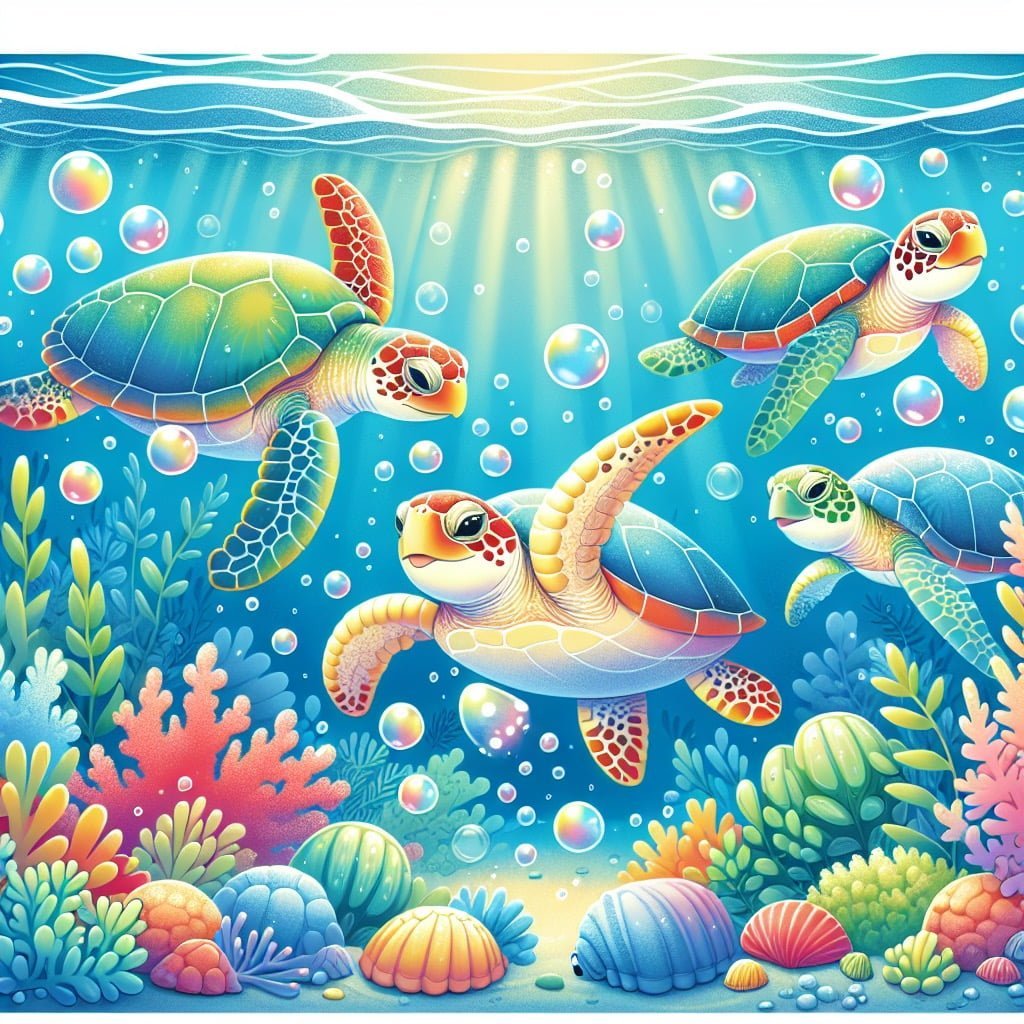
For younger kids: Sea turtles can hold their breath for a super long time, like magic!
For older kids: Certain sea turtle species have the ability to hold their breath for several hours while underwater, allowing them to dive deep and search for food without needing to come up for air often.
Detailed explanation:Sea turtles are fascinating creatures that have adapted to life in the ocean in incredible ways. One of the most impressive abilities that some sea turtles possess is the ability to hold their breath for extended periods of time. This is a crucial skill for sea turtles, as they spend the majority of their lives underwater.
Sea turtles are equipped with special adaptations that allow them to stay submerged for long periods. Their slow metabolic rate and large lung capacity enable them to conserve oxygen and stay underwater for extended periods of time without needing to breathe. In fact, some sea turtles have been known to hold their breath for several hours at a time.
This ability to hold their breath for hours is especially important for sea turtles when they are diving for food or evading predators. By staying submerged for extended periods, sea turtles are able to successfully hunt for their prey without constantly needing to resurface for air. This allows them to catch and consume their prey efficiently and safely.
It is important to note that not all sea turtle species have the same breath-holding capabilities. For example, leatherback sea turtles, the largest of all sea turtles, are known to have a remarkable ability to stay underwater for extended periods compared to other species like the green sea turtle.
In conclusion, the fact that some sea turtles can hold their breath for hours is a testament to the incredible adaptations and survival strategies that these fascinating creatures have developed over millions of years of evolution. It is truly remarkable to think about the ways in which sea turtles have evolved to thrive in their oceanic habitats.
Sea Turtle Facts For Kids
10. Sea Turtles Come in Different Colors
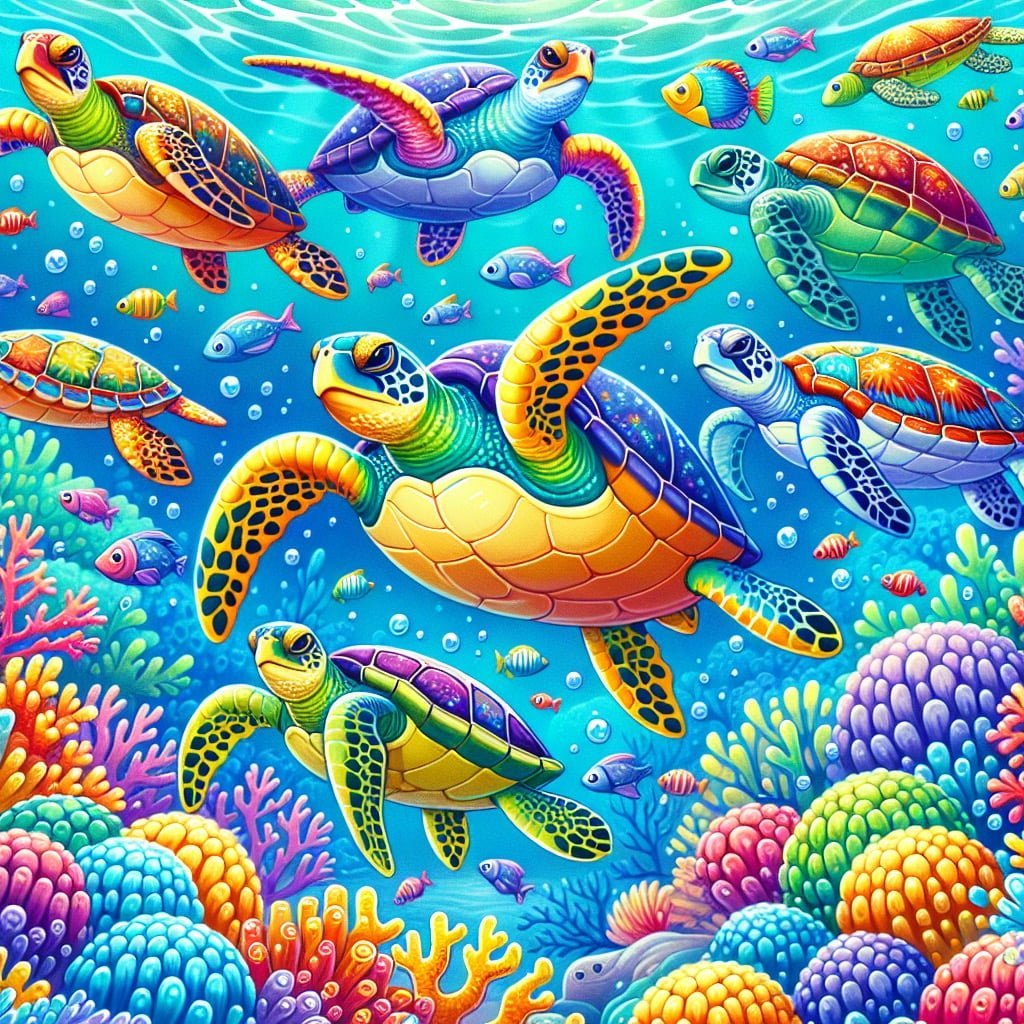
For younger kids: Sea turtles are like rainbows – they come in different colors!
For older kids: Sea turtles can have various shell colors like green, brown, black, or even red depending on their species, habitat, and diet, adding beauty to the underwater world.
Detailed explanation:Sea turtles are fascinating marine creatures that come in a variety of colors, making them a topic of interest for kids and adults alike. These gentle giants can be found in oceans around the world, with their colorful shells and unique patterns adding to their allure.
One of the most common sea turtle species is the green sea turtle, which gets its name from the greenish color of its fat underneath its shell. These turtles can also have brown or olive-colored shells, making them easily recognizable in their natural habitat. Another popular sea turtle species is the loggerhead turtle, which has a reddish-brown shell with distinctive light and dark markings along its flippers and head.
Each species of sea turtle has its own unique coloration, ranging from the vibrant greens of the green sea turtle to the dark browns of the loggerhead turtle. This diversity in color helps researchers and conservationists identify and track individual turtles in the wild, giving valuable insights into their behavior and migration patterns.
Sea turtles’ colorful appearances are not just for show – they play a crucial role in the turtles’ survival. The colors of their shells and skin help them blend in with their surroundings, providing camouflage from predators and making it easier for them to hunt for food.
In conclusion, sea turtles come in a wide array of colors, each unique to their species. These vibrant hues not only make sea turtles visually appealing but also serve important purposes in their survival and ecosystem. Learning about the different colors of sea turtles can be a fun and educational experience for kids interested in marine life.
Did you know?
Did you know that sea turtles have been known to travel thousands of miles in search of food and nesting grounds?
Summary of Sea Turtle Facts For Kids
Are you ready to dive deep into the fascinating world of sea turtles? In this blog post, we uncover some incredible facts about these ancient marine creatures that have been around for 150 million years. From their impressive diving abilities to their incredible navigation skills, sea turtles are truly remarkable animals. Did you know that female sea turtles return to the same beach to lay their eggs? Or that some sea turtles can travel thousands of miles across oceans? Whether you’re a young kid fascinated by sea turtle colors or an older kid intrigued by their role in coral reef ecosystems, there’s something for everyone in this blog post. So, come along and discover the wonders of sea turtles!
Sources and additional information for Sea Turtle Facts For Kids
WikipediaBritannicaSan Diego Zoo KidsThe Smithsonian InstitutionDK Find Out!Australian MuseumWorld Wildlife FundThe Nature ConservancyAnimal PlanetMonterey Bay AquariumPBS NatureSmithsonian’s National Zoo & Conservation Biology InstituteWorld Wildlife FundAnimal Diversity Web (University of Michigan)IUCN Red List of Threatened SpeciesThe Cornell Lab of Ornithology – All About BirdsNational Audubon SocietyEncyclopedia of LifeSeaWorld Parks & EntertainmentAustralian Museum – AnimalsEncyclopedia of Life




